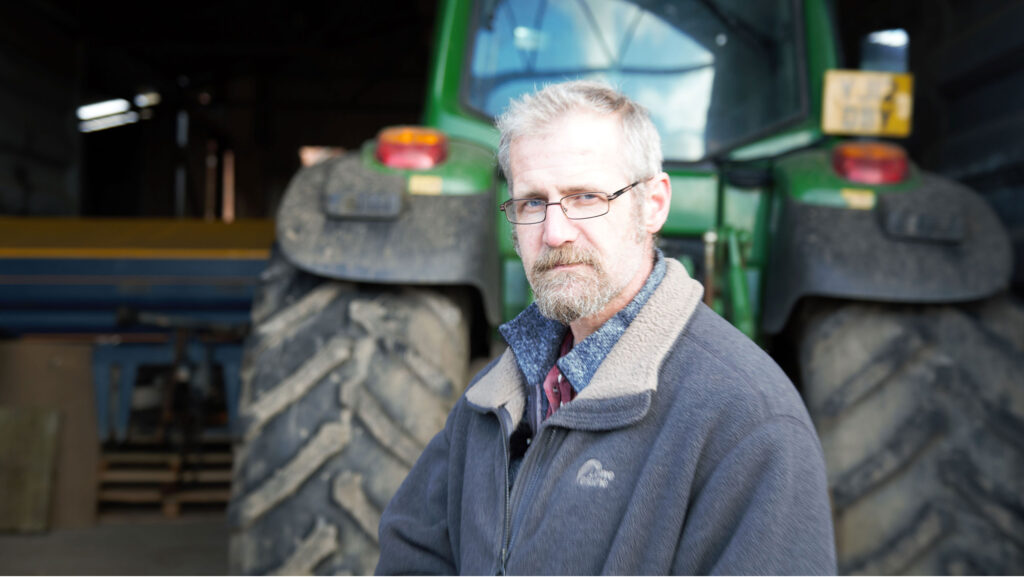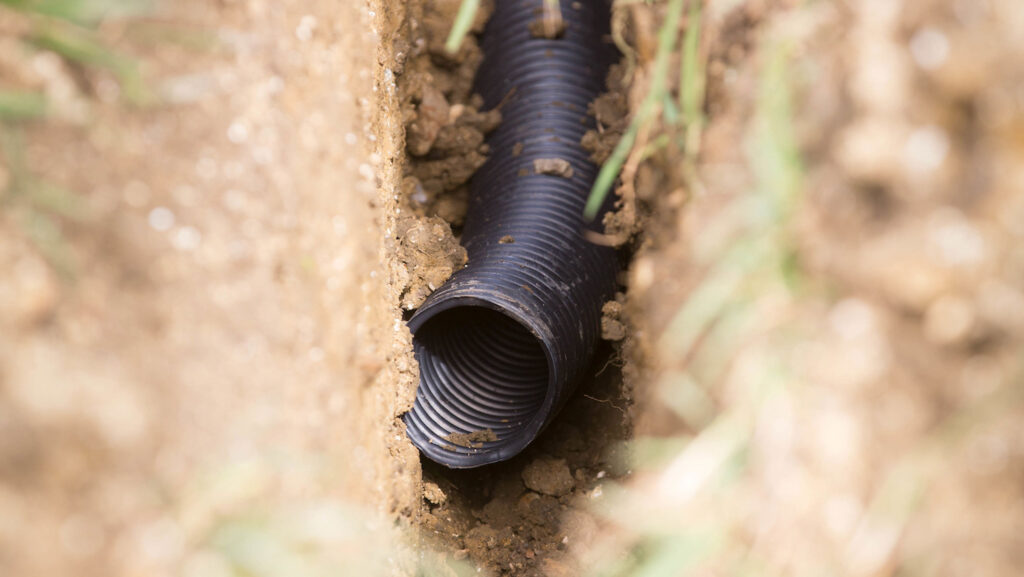Trials farm suffers massive financial hit from wet weather
 David Blacker © AHDB
David Blacker © AHDB A grower hosting AHDB trials estimates this season’s wet weather could cost him £80,000 in lost income, due to reduced yields, no spring cropping and less contracting work.
David Blacker, who farms over 200ha in Skelton, near York, has been the host of the AHDB Strategic Cereal Farm North since 2022, running trials, including nitrogen use efficiency and drainage.
Between 15-17 September, David drilled winter wheat varieties Graham, Extase and Champion, at rates to achieve establishment of 300-350 seeds/sq m.
See also: 9 steps to obtain accurate combine yield data this harvest
The crops received pre- and post-emergence herbicides and, by February, plants had 900 tillers/sq m. However, constant rain in March and April led to severe waterlogging.
He applied 70kg/ha of nitrogen fertiliser on 24 March, but three weeks later, crop growth was unchanged, and plants were yellow.
Soil tests found only 25kgN/ha, meaning 45kgN/ha had been lost, much of it through nitrous oxide gas, due to the anaerobic conditions.
Tiller numbers
Subsequently, tiller counts fell to 500/sq m in March and, by April, were 300/sq m, with single tiller plants.
Yield potential had been lost and David was left with the problem of how to best manage the wheat to harvest.
He estimates that the block of just over 40ha will produce about 103t less yield than the five-year average, meaning a loss of income of about £20,000.
David’s other block of wheat on the farm has also suffered in the wet weather and he reckons there will be a similar loss from it.
He planned 80ha of spring cropping, but only 12ha were drilled. David calculates that he has lost £20,000 of potential income from the unplanted spring beans.
Contracting down
He also has a contracting business and has lost income from not spraying, fertilising and combining crops, which he puts at another £20,000.
That adds up to a potential £80,000 loss of income this season, David says.
“All in all, it’s been a devastating year from a cropping point of view; soul destroying from a farming point of view.
“I’m looking forward to clearing the fields and starting again next time with a clean sheet.”
AHDB drainage trial

© Tim Scrivener
One way that David Blacker hopes to better cope with wet years like this one is by investing in field drainage. He is working with Adas to find the optimum spacing.
He points to one field that was partially drained as part of a trial and has a crop of winter wheat. David says this would not have been possible without the new drainage, and, over the years, the field has spent more time cover-cropped than growing cash crops.
Last season, winter beans were planted in the field and yields were 0.67 t/ha higher in the newly drained areas, compared with the area with old drains.
This yield difference increased to 0.77t/ha against the undrained area.
The trial field is close to the river Ouse, and has a 30-60% clay content and 5-6% organic matter.
It suffers from compaction in places and is seasonally waterlogged, apart from this year, when it has been constant.
The field was divided into four areas and new drains were installed into clay loam soil and clay soil between May and September 2022. The other two areas are clay soil with old drains and no drains.
David installed the drainage himself using a Sheldon three-point linkage trencher with a laser for levels. He designed a spreadsheet to calculate the levels.
The new drains were laid at 20m, 15m and 10m apart to try and find the optimum distance.
The last drainage research was carried out 60 years ago. It suggested that drains should be spaced 20m apart, and this is still used today.
David is investigating whether heavy land such as his needs drains spaced closer together, especially with the effects of climate change on changing weather patterns.
Anne Bhogal, soil scientist at Adas, explains that the drains are working fine, but there is no lateral movement of water to them. The plan is to mole drain the bottom end of the field to try and improve this.
David says that 81ha of his 202ha farm needs draining, and he is using the income from contracting to drain one field at a time.
He will use the results from the trial to refine his approach in other fields.
Centre costs calculations
- 20m 494.2m/ha = £2,693.39/ha
- 15m 657.29m/ha = £3,582.95/ha
- 10m 988.4m/ha = £5,386.78/ha

